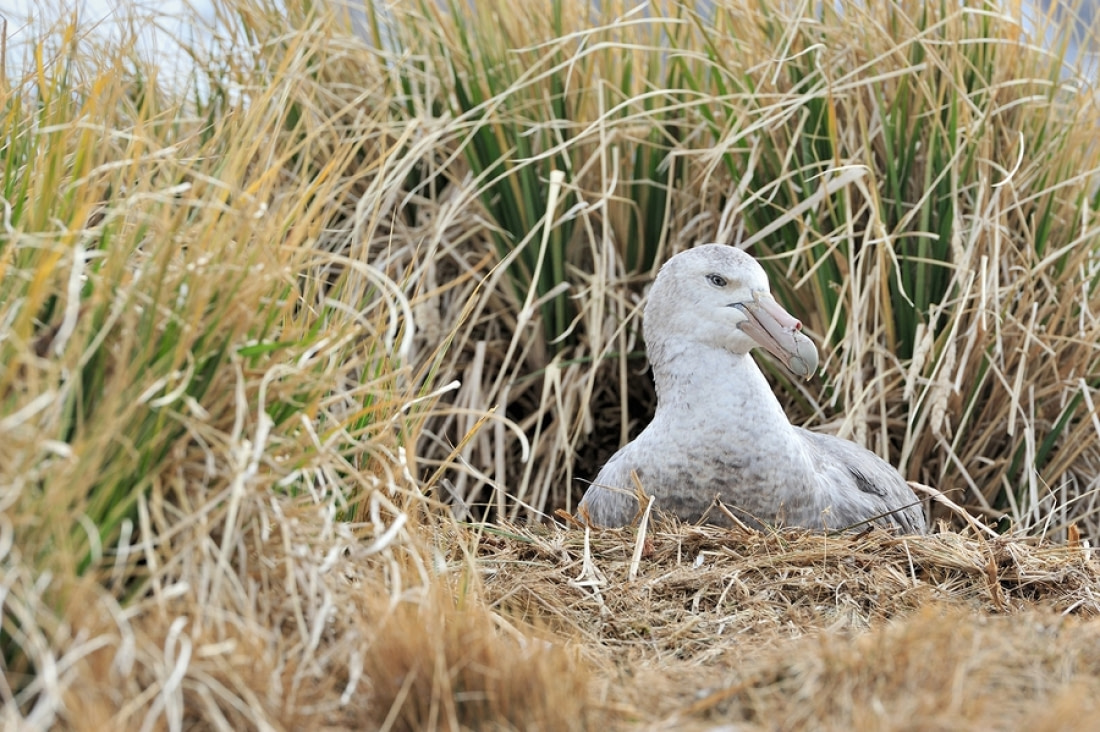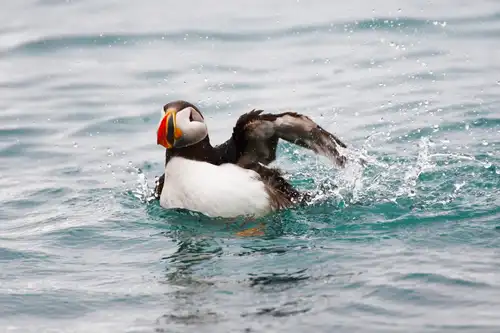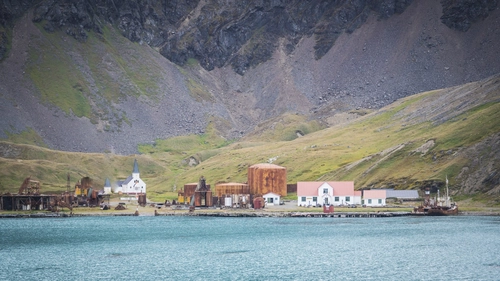Antarctica is undeniably one of the world’s premier birding destinations.
Nowhere else can you spot penguins, storm petrels, skuas, and kelp gulls all within the same view through your binoculars. Regardless of your level of birding interest or experience, witnessing these birds in their natural environment is always inspiring.
However, one bird species stands out among the rest.
The giant petrel can often be seen awkwardly moving along the beaches of King George Island, as if it has just learned to walk. More frequently, though, it is observed gliding through the air on its impressive wingspan of 180 to 210 cm (71 to 83 inches).
With its striking grey eyes and tube-nosed beak, the giant petrel of King George Island is a remarkable sight, no matter how you encounter it.

King George Island’s tubenose seabirds
Sometimes called “stinkers” because they scavenge on anything dead, dying, or weak, giant petrels are the largest birds in the Southern Hemisphere.
There are currently two recognized species of giant petrels: northern giant petrels and southern giant petrels. These species are nearly identical, though they exhibit several different color variations, or “morphs.”
These morphs can range from white to dark grey.
Since giant petrels spend most of their lives at sea, they have evolved unique adaptations: Their beaks feature tube-shaped nostrils that filter salt from seawater, allowing them to drink fresh water. This adaptation has led to the term “tubenoses.” Other tubenoses include shearwaters, fulmars, albatrosses, storm petrels, and diving petrels.

Giant petrel breeding rituals
Giant petrels are solitary creatures, spending months alone feeding at sea. But when the austral summer arrives in October, they migrate to the circumpolar regions of Antarctica to breed.
Preferring privacy, they nest several hundred meters apart in colonies that have been used for generations.
Building a nest is a simple task, usually involving the rearrangement of a few stones. A few weeks after establishing a nesting site, the eggs begin to appear. These eggs can be around 20 cm (8 inches) in diameter, resembling dinosaur eggs.
Giant petrels lay only one egg per year, making it crucial for the parents to be vigilant in protecting their vulnerable young.
However, giant petrel parents are sensitive to disturbances and may abandon their egg if they sense danger. Evolution has taught them that their own survival is more important than their unhatched egg, as they can always nest again the following year.

Working with giant petrels on King George Island
The austral summer (October to March) provides mild enough conditions for scientists to study giant petrels on King George Island.
At the start of the breeding season, scientists monitor giant petrels from a safe distance using binoculars and high-powered spotting scopes. They then take a census of the colonies, map them, and compare the data to historical records.
Occasionally, a giant petrel colony will overlap with a penguin colony, making disturbances from penguins (and visiting humans) a challenging issue.
In such cases, it’s crucial for scientists to approach the giant petrel colony slowly and avoid close contact. Giant petrels may emit a low “uuuurrr” sound if they feel threatened.

Giant petrel chicks
When giant petrel chicks begin to emerge from their eggs, it’s time for the parents to start feeding them.
Feeding is a round-the-clock task that involves catching fish at sea, scavenging for dead seals along the beaches, and searching penguin colonies for unattended eggs or chicks. Giant petrel chicks enjoy some of the best dining in Antarctica.
When disturbed, giant petrel chicks have a defense mechanism known as “gakking.”
Gakking is the sound they make as they projectile vomit at predators (or unwitting scientists). The fluid they expel is a mix of digestive juices and food remnants, producing an unpleasant odor.
For conservation purposes, scientists must continue to study giant petrel chicks. Researchers fit the young birds with a metal band around their leg, with a number corresponding to the year they were banded.
Each year, when scientists return to collect data, they try to read these band codes to determine which giant petrels have returned to breed.

The conservation of giant petrels
From 1997 to 1998, thousands of giant petrels were killed in illegal longline fishing operations in the Southern Ocean.
The long lines were intended for Patagonian toothfish but ended up catching over 4,000 giant petrels and numerous other seabirds and marine mammals. This fishing method has since been regulated, allowing the giant petrel population to recover.
Although giant petrels are no longer in immediate danger of extinction, the increasing presence of marine plastics and other debris continues to pose a threat to their populations.

King George Island (and other places to see giant petrels)
King George Island, the largest in the Shetland chain, is an Antarctic island perfectly situated within the breeding range of giant petrels.
This makes King George Island one of the most reliable places to observe these birds, though they are also commonly seen in most coastal areas of Antarctica and the sub-Antarctic islands. They are also abundant in the Drake Passage.
If you’re heading south for an exciting Antarctica cruise, be sure to keep your binoculars handy!

Title image by Thomas Laumeyer





Related Trips
Blog



Antarctica’s Hourglass Dolphin

The Emperor Penguin of the Drake Passage

Puffins: Clown Birds of the Atlantic

Flowers in Antarctica

Adélie Penguins: the Little People of the Antarctic

Taking a polar expedition cruise delivers no shortage of show-stopping highlights, but one of the most exhilarating is lifting off from the ship in a helicopter and taking flight over the incomparable Antarctic wilderness.

The First Overwintering Hut in Antarctica

Six Facts About the Crabeater Seals of Antarctica

The Classic Polar Cruise: Antarctic Peninsula Facts, Pics, and More

Top 10 Antarctic Attractions

The Eight Albatrosses of Antarctica and the Sub-Antarctic

Life in a Penguin Colony

The Plants of Antarctica

Ice streams and lakes under the Greenland Ice Sheet

Five Reasons Why Snowshoeing is a Perfect Polar Activity

Gough Island: Seabird Capital of the South Atlantic

Northeast Greenland National Park

The Secret Life of Glaciers: How They Form, Move, and Melt

15 Toothy Facts About the Atlantic Walrus






 19 Days / 18 Nights
19 Days / 18 Nights






